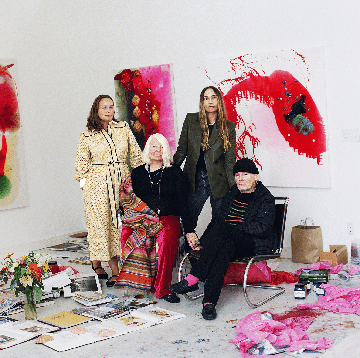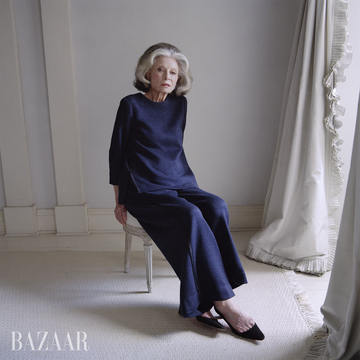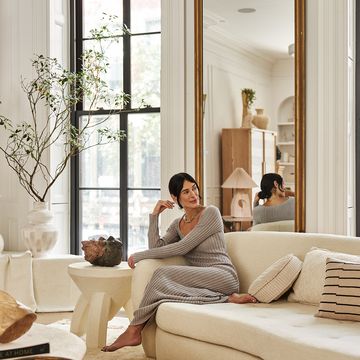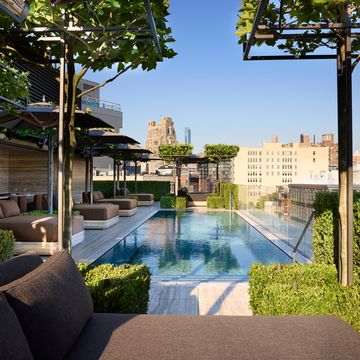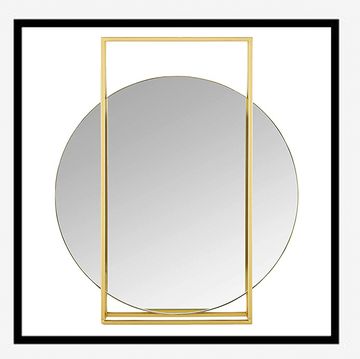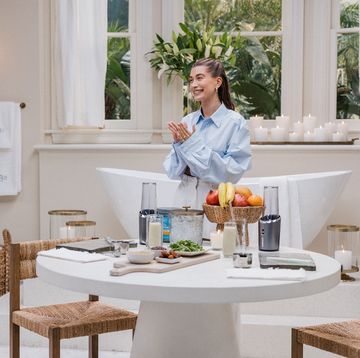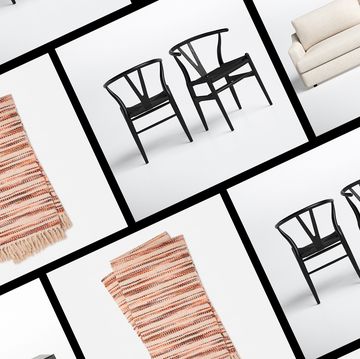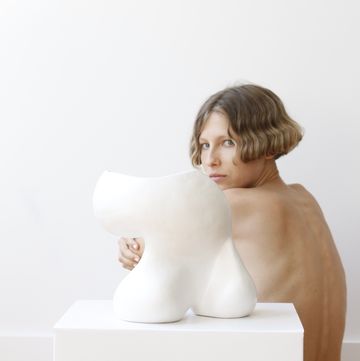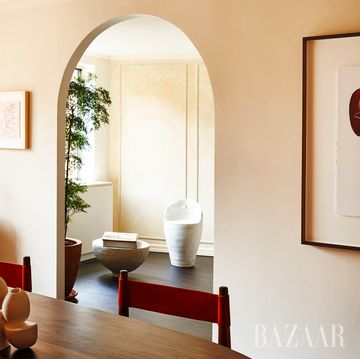A throw pillow was my gateway drug. I purchased it last August from Jonathan Adler—22 square inches of pale blue-and-white checkerboard. Since then, I’ve added checkered bath towels, a checkered mug, checkered underwear, and a checkered phone case to my repertoire of gridded possessions, along with countless “inspo” screenshots in my camera roll. The proliferation of this singular pattern has become a matter of deliberate obsession for me at this point, but like most aesthetic phenomena these days, it originated as something far subtler: an eerily omniscient wink, courtesy of the Instagram algorithm.
Starting sometime last spring and picking up speed over the summer, checkerboard began infiltrating every corner of my social media footprint. In typical Baader-Meinhof fashion, I wasn’t sure if checkerboard was actually everywhere or if I had just become hyperaware of it. The former proved true when other people began echoing my suspicions. “I remember seeing the Sight Unseen ladies do a story about the checkerboard trend back in April,” Zoë Sessums, an editor for Architectural Digest’s Clever vertical, tells me. “From there on out, checkerboard or gingham or some kind of square pattern was always showing up in my Instagram discovery page.”
Over time, the algorithm introduced me to a club of checkerboard design purveyors. There was Katherine Plumb, a textile designer and artist based in Stockholm whose feminine pastel checkerboard creations have cropped up everywhere from influencer mirror selfies to collaborations with cult-favorite style curators like Home Union and Lisa Says Gah. Sarah Nsikak, the creator behind La Réunion who incorporates checkerboard as a running motif throughout her collection of made-to-order patchwork dresses and quilted textiles. Annabell Lee, an artist whose penchant for hand-painted checkerboard has birthed a digital fantasy world of mesmerizing furniture and clothing. Mellow, the source of all the extremely cool black-and-white checked vases and incense bowls that magically seem to appear atop the shelves and mantels in every home I stalk online. ARQ, whose checkered lingerie sets have pushed bras and underwear squarely into the realm of Instagrammable outfits. Holiday the Label, an Australian brand that’s had a similar effect on checkered pajamas and their potential for moonlighting as more than just sleep attire. Baina, another Antipodean brand and the source of my aforementioned checkered towels. Studio Hecha, a destination for colorful checkered drinking vessels that sell out instantly every time they drop. Tyler McGillivary, whose best-selling Emma top makes my heart palpitate whenever I see it—which is, quite frankly, a lot. The list goes on.
More From Harper's BAZAAR

“It’s been good for business for sure,” Elise Wilken, the ceramicist behind Mellow, says regarding the explosion of checkerboard on Instagram. The effect was similar for Plumb, who says, “It went from zero to a hundred pretty quickly.” ARQ founder Abigail Quist shares that even though their checkered-print bras and underwear don’t necessarily sell more than their other more neutral, solid colors, they do get posted online more than anything else.
Following in the hallowed footsteps of other Insta-bait design trends like millennial pink, the Ettore Sottsass mirror, and mushroom lamps, the checkerboard pattern is uniquely fruitful material for this kind of self-perpetuating appeal. “Instagram’s ‘grid’ has the potential to be one big checked experience,” Nsikak muses, “so maybe it’s meant to be?”
The pattern also conjures a sense of nostalgia. Multiple people I spoke with about checkerboard fondly cite slip-on Vans as their early introduction to the print. Wilken mentions old-school New York taxi cabs, racing flags, and graphics in the newspaper classified ads as sources of checkerboard exposure throughout her childhood, which now serve as inspiration for her pieces. Likewise, my mind goes straight to the retro yellow-and-white checkered linoleum floor in my parents’ apartment growing up. Designer Matilda Goad, who has both a checkered tile wall and a checkered floor “fit for hopscotch” in her London home, emphasizes that the roots of check date back centuries, noting that they’re “traditionally used in varying shades of stone in grand halls or kitchens.”
When my parents ripped up their linoleum floor a decade ago, they probably considered it a long-overdue update; now, though, the aesthetic could be considered distinctly on trend again. The more checkerboard overtakes my Instagram feed, home, and wardrobe, the more I’ve tried to parse why exactly this pattern has swept the design world in such dramatic fashion. What made the timing right for checkerboard to blanket every corner of our lives, online and off, in the year of 2020?
“It almost has a calming nature, or a sense of order we’re looking for right now,” reflects Shannon Maldonado, founder and creative director of Yowie. In the midst of the pandemic, she purchased a checkerboard painting by Josh Itiola to hang in her Philadelphia store. “It just felt really comforting to have it there,” she tells me. Plumb and Nsikak also cite the comforting familiarity of checks as one of the reasons they are drawn to it repeatedly in their work, and Lee shares that “painting repetitive patterns on fabric is a meditative process” for her.
Checkerboard is no doubt comforting not only because of its nostalgic heritage and repetitive nature, but also because of its low barrier to entry. The erstwhile doodles in my middle school notebooks prove that pretty much anyone can create their own version of a checkered pattern, even those without a background in art or design. Much like a stripe, there’s something sort of neutral and friendly about it as far as patterns go, which makes it readily adaptable to different tastes, creative directions, and environments. “It’s a pattern that lives for everyone,” Maldonado says.
When checkerboard really started to reach a fever pitch online (at certain points, my Instagram feed resembled a dream sequence from The Queen’s Gambit), I debated whether I should try to curtail my impulse to buy into it. I know from experience how easy it is to get swept up in a trend only to get sick of it shortly thereafter, and how social media algorithms tend to expedite that outcome. In the interest of sustainability, I make an effort to avoid getting caught up in boom-and-bust trend cycles, but something about the tenor of this particular phenomenon feels different to me. Less transient. More grounding.
Maybe because in a weird way, for lack of consistent in-person interaction, checkerboard has provided an inkling of connection. Whether I’m admiring the work of an independent designer whose unique interpretation prompts me to look at checks in a new way, or responding to a DM from a kind stranger on the Internet who went out of their way to send me a photo of a checkered thing they thought I might like, or simply sitting with the knowledge that so many people in different corners of the world can arrive at a shared obsession simultaneously, I can’t help but reach for a thread of community weaving through it all. A thread that stretches beyond the programmed suggestions of an algorithm and taps into the deeply human desire to exclaim, “OMG! I love this too.”


